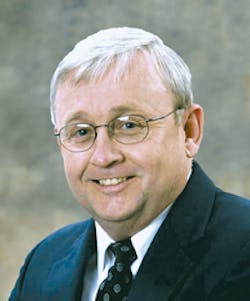Over the past five years or so, events leading up to the 2009 formation of Invensys Operations Management (IOM, http://iom.invensys.com)
—the Plano, Texas-based automation unit of Invensys plc—may have appeared to those outside the company as a disjointed series of discrete events: announcement and publicizing of the ArchestrA software platform; announcement and publicizing of the InFusion enterprise control system; announcement of reorganization creating Invensys Process Systems (IPS) from Foxboro, Avantis, Triconex and SimSci Esscor; and announcement of creation of IOM, composed of IPS, Wonderware and Eurotherm. Throw in a few surprise executive moves, and the world wondered what was going on with the company.
During the ARC Forum, Feb. 8-11 in Orlando, Fla., Automation World sat down with IOM Vice President Peter Martin to discuss the evolution that led to the company’s current organization. Based upon that discussion, it appears as though the actuality of the evolution really should be mapped more like one of those 1960s maps of the gravitational forces of the solar system. Imagine a continuum of planning and technical development with an occasional “bump” of publicity.
Technology unification
Martin says that a core group from the various entities first met to explore ways of integrating the companies assembled by British-based Invensys—which at that time resembled a holding company more than a unified manufacturing company. They decided to first unify the technology, then bring the organizations together.
Deciding that rewriting code from all of the products in order to integrate them was not workable, a team working under the direction of Pankaj Mody, now chief technical officer (CTO) of IOM and then CTO of Wonderware, began work on a new software foundation. Indeed, Martin points out that one of the first signs of integration was the appointment of Mody as CTO of both Wonderware and IPS.
Working with Microsoft to develop a .Net platform based on services rather than the older component object model (COM) technology, the team developed a platform that was later publicized as ArchestrA. Not really a product, it is the foundation of the way to integrate and evolve disparate Invensys—and third-party—products. Work began with the Foxboro distributed control system (DCS) platforms and then spread to Wonderware and eventually Triconex and others, Martin says. The culmination of the Foxboro stage led to the announcement of InFusion, the Enterprise Control System. Outsiders were confused as to what was Foxboro and what was Wonderware, but there was no difference. The “companies” were actually in the process of coming together by evolving to a new and modern platform, according to Martin.
The later products from Wonderware and now the InFusion 2.0 platform introduced at the ARC event are just the latest stages of the evolution, Martin explains. It's also important to keep in mind that InFusion has hooks so that customers can not only migrate to the new control layer from Foxboro and Wonderware, but they can also migrate from other legacy DCS platforms, he adds.
After the technology began to come together, then it was time to bring the company together as one organization. That is the situation today, as Sudipta Bhattacharya was appointed in June last year to the position of IOM chief executive officer to forge the new entity.
Moving forward
Hints of this strategy were offered from previous leaders such as Mike Bradley, former president of Wonderware and from Martin himself. Unfortunately, IOM management never really provided a coherent explanation of what was going on—and marketing proceeded to put spin on parts along the way. This led to an intense amount of speculation in the industry.
IOM is now poised organizationally to exploit all of this work in the market. Its evolution is seen by some as an important and interesting trend in the automation space that holds the promise of helping engineers migrate systems to new platforms without ripping everything out.
Invensys Operations Management
http://iom.invensys.com
About the Author
Gary Mintchell
Editor in Chief

Leaders relevant to this article:
